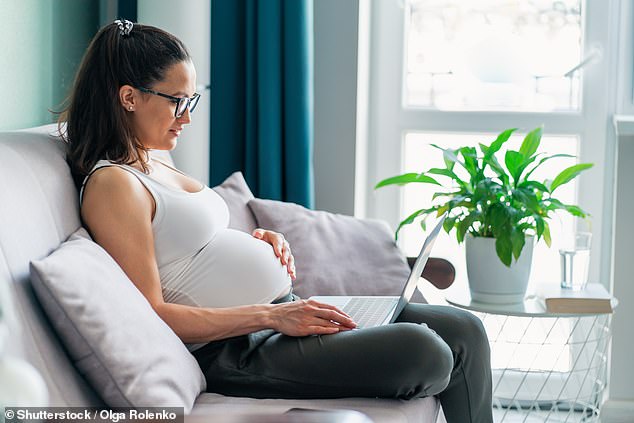Table of Contents
In a few months I will have a baby and I really want to continue contributing to my pension during my maternity leave. I currently pay above the minimum contribution level so I can get higher matching contributions from my employer.
I asked my HR department how to maintain payments while on leave. I was told that I will receive full salary for the first 20 weeks and that normal contributions will be deducted.
When I move onto statutory maternity pay, my contributions will continue to be based on the lowest salary level, and my employer’s contributions will continue to be based on full salary, although I will not be able to make salary sacrifices in that period. .
If I then take unpaid maternity leave, HR tells me I won’t make contributions and neither will my employer, but suggests I consider increasing my contributions for a time when I return to work to compensate for this.
I’m not really happy with this answer because, ideally, I would like to continue paying my current higher contributions and have them matched in full by my employer during all stages of my maternity leave.
Do I have the right to this? If I say I want to pay the usual amount, even during the period of unpaid maternity leave, will this mean that my employer will also have to pay and fully match my payments?
If not, and I only have to catch up when I return to work full time, would it be better to pay a lump sum into my pension at that time or increase my contributions over a period as HR suggested?
Planning ahead: What’s the best way to maximize my pension contributions while I’m on maternity leave?
This is Money’s Tanya Jefferies responds: Many women get off to a good start with their pension savings, but start to fall behind if they have children.
It is therefore sensible to fill gaps resulting from maternity leave immediately or as soon as possible, otherwise they could never be made up again.
Even short breaks in saving for retirement can make a difference, especially when you are young, as you miss out not only on the sums involved but also on the immensely valuable compound growth of your pension investments that builds up over time.
If you are in a relationship, married or in a common-law relationship, it is a good idea to take a joint approach to maximizing both pensions throughout your working life, including during maternity leave.
For example, if you temporarily cannot afford to pay contributions during maternity leave but your partner has money to help you, ask them to do so because this can benefit both of you in the long term.
However, there are some tax drawbacks to be aware of, which are explained in our guide to couples and pensions.
You should also make full use of your employers’ matching pension contributions, as you are currently doing.
This is free money, plus additional tax relief from the Government, which you would not otherwise receive in your pension.
It makes sense for both partners to contribute and help each other subsidize each other by paying their pensions when necessary, as long as they do so in a tax-efficient manner, as in the end they will enjoy a richer retirement together.
And if they are unfortunately split, but their pension funds are not too unbalanced – as they historically have been between men and women, mainly due to pay differences as the latter do unpaid care work – there will be less discomfort and hostility about splitting them. .
Having said all that, even for those with the best intentions like you, the maternity leave system can be complicated when it comes to pension contributions.
We asked a financial expert to explain how to calculate how much you could lose and the best way to fill that gap.

Laura Suter: Your employer will continue to contribute its current contribution through your maternity benefit until you go to the period without salary
Laura Suter, head of personal finance at AJ Bell, responds: First of all, congratulations for thinking about the future.
Women tend to have smaller pension pots than men, partly because they are more likely to take career breaks when they have children.
This leaves them with a large gap in their pension contributions during that time. It’s great that you are planning ahead for your maternity leave.
What your employer has told you is correct and unfortunately the system is not very flexible.
Your employer will continue to pay your current contribution through your maternity leave until you go into the unpaid period.
However, after the first 20 weeks, your personal contributions will be based on your lowest pay level, which is where your personal pension gap will start.
How big is the financial hole you will have to fill?
Your first task is to determine what your pension gap will be. It gets quite complicated but it is possible.
You need to calculate how long your maternity leave will last; If you’ve already discussed it with HR, they should be able to give you a breakdown of how long you’ll be on full pay, legal pay, and no pay.
You should then look at your most recent pension statement and see how much you and your employer are contributing each month.
You can ignore the first 20 weeks of your leave as it says you will receive full pay and therefore neither you nor your employer’s contributions will be reduced.
The next step is to determine how much of the rest of your leave will go towards statutory maternity benefit.
Your employer will continue to contribute fully on your behalf during this period, but your personal contribution will be based on your statutory maternity pay.
So you’ll have to do the math to work out how much that amounts to and what pension gap it leaves you with.
And finally, you need to calculate how long your last period of unpaid leave will be, where you will receive zero pension contributions and what the pension shortfall will be during that time.
STEVE WEBB ANSWERS YOUR QUESTIONS ABOUT PENSIONS

What is the best approach to make up for missing contributions?
You have three options if you want to cover the shortfall: increase your pension contributions before going on maternity leave; increase them when you return to work; or a combination of the two.
Some companies will only allow you to change your pension contribution rate once a year or at certain life events, and having a child is usually one of them. Depending on your rules, that could force you to only increase contributions when you return to work.
You are also wondering if it is better to pay it in a lump sum or as an increased monthly contribution.
This depends on a couple of factors. First: your employer’s matching rules. If you are not using up your entire employer contribution at the moment, then you will be better off increasing your monthly contribution as your employer will also be adding more to your pension.
The next factor is whether you pay your pension through salary sacrifice.
If you do this, your pension contributions are effectively collected before paying any tax or national insurance, saving you more money than if you simply paid a lump sum and claimed the tax.
What other measures can you take to maintain your pension?
There are a couple more things to keep in mind. Because holidays and holidays accumulate during maternity leave, many women take them at the end of their leave, to reduce the period in which they do not receive pay.
During this period you will have effectively returned to work for payroll purposes, so your pension contributions will return to normal. This can help reduce the pension gap.
Secondly, if you decide to return to work part-time, or fewer hours than you currently work, that will have a big impact on your pension contributions.
If you want to keep your pension, you will need to significantly increase your percentage contribution to compensate for your lower salary.
Some links in this article may be affiliate links. If you click on them, we may earn a small commission. That helps us fund This Is Money and keep it free to use. We do not write articles to promote products. We do not allow any commercial relationship to affect our editorial independence.

